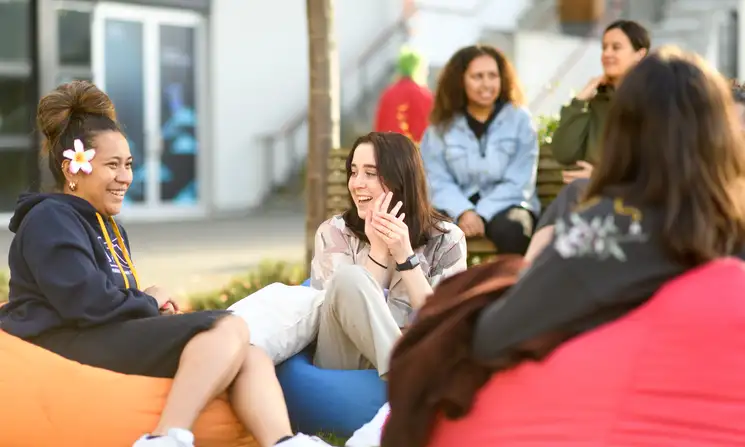
Our vision
The vision for Pacific Massey is that, "Massey University will be the centre of excellence for enabling Pacific success in tertiary education, research, and social and economic transformation".
Mission statement
"Empowering Pacific students and communities to achieve their social and economic aspirations, through excellence in education, research, and leadership".
Creation of the Pacific Massey strategy
In 2006, top-ranked Tongan medical doctor and academic Professor, Sitaleki Finau, was appointed the Director Pasifika at Massey University, becoming the first to hold this role in a New Zealand university.
Massey led the way when we introduced the “Pasifika@Massey Strategy 2006–2009: En route to Cultural Democracy”. This strategy identified the needs of Pacific communities, and what we could do to respond to those needs.
Our conscious journey to recognise the needs of Pacific communities continued in 2013 when the “Growing Pearls of Wisdom: Pasifika@Massey Strategy” was introduced.
This gave us a strategic framework to support the educational aspirations and economic needs of Pacific communities, and identified what this could look like.
In 2020, a review of the Pasifika@Massey Strategy 2020 took place under the leadership of the new Massey Dean Pacific, Professor Palatasa Havea (Tasa) ONZM, and the team at Pacific Student Success.
Strategy goals
There are five key strategy goals as follows:
- Academic student achievement
- Research and Policy
- Engagement
- Organisational capacity and capability
- Pacific curriculum development
For more information about the latest strategy, download the Pasifika@Massey Strategy 2020 publication.
Key Pacific values
Our values are the guiding principles that underpin our strategy and they identify what is inherently important in all aspects of the strategy.
These strongly held principles characterise Pacific people and communities, and are demonstrated in their customs, practices, and ways of being:
- reciprocity
- respect
- inclusion
- spirituality
- relationships
- leadership
- family
- love
Connecting with our Pacific communities
Massey is a leader in recognising the importance of Pacific communities and we have a strong history of focusing on our Pacific students and their needs.
Overall Pacific learners at Massey reflect the following patterns:
- just over half of Pacific students are aged over 25
- almost half of Pacific students study by distance
- 40 per cent of Pacific students study part-time, to fit it in with work and family life.
Driven by our “Massey University Strategy 2018–2022”, we developed a Pacific Learner Success Plan after working with students to find out what they needed in order to succeed. Developing an ecosystem that fosters support and success along every step of the educational pathway has been key.
Each Massey University campus – Auckland, Wellington and Manawatū (in Palmerston North) – now hosts a space that Pacific students can use, and well as easy access to academic and pastoral support.
We also hold annual celebrations for Pacific graduates, to acknowledge and celebrate their success alongside their families. We have increased collaboration with the Pacific community through events like:
- orientation and open days
- community PolyFests
- Pasifika Fusion.
Pacific Research and Policy Centre
The Pacific Research and Policy Centre provides a way to increase Massey University’s research on key Pacific issues and communities, within New Zealand and in the Pacific.
We bring together a wide range of disciplines and research areas, assist with ethical and cultural requirements for research in the Pacific. We also bring Pacific-related work of Massey researchers together.
Rationale behind the new logo and branding
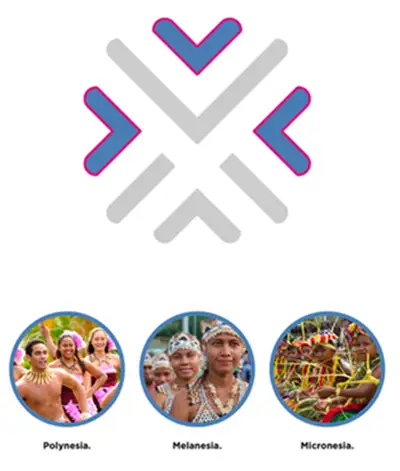
3 arrows represent the respective regions of the Pacific. It symbolises diversity within the Pacific as well as inclusiveness of all Pacific peoples.
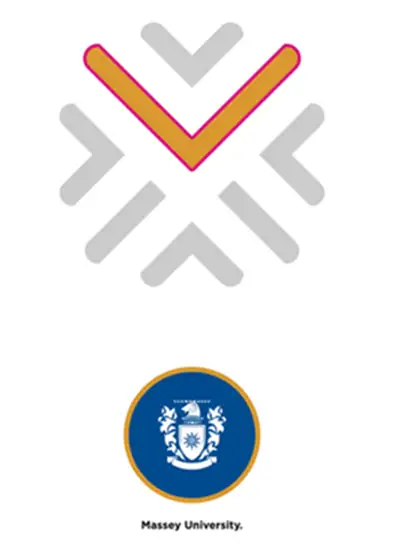
Larger arrow represents Massey University with the Pacific regions converging towards it. This symbolises collaboration and a connected community.

The 4th arrow represents the Pacific student attending Massey university. 2 lines on the sides act as a weave towards Massey. The 3 arrows symbolise their interwoven narrative. The lines can be seen as incomplete representing a developing journey.
Logo: Fala
The logo is inspired by pandanus weaving. Pandanus is a tropical plant, and its leaves are very important in Pacific culture and tradition, and is commonly used for weaving mats, bags, fans, hats, costumes and more.
The logo focuses on the weave pattern which is popular in all corners of the Pacific. Weaving is also an integral part of the oceanic circumnavigation abilities that allowed Pacific people to link throughout the Pacific via the ocean.
All of the arrows are facing inward, representing coming together and a strong sense of community, and the weave pattern is a symbol of strength and unity, also representing a sense of community.
The three arrows represent the respective regions of the Pacific, and symbolises diversity, as well as inclusiveness of all Pacific peoples. The larger arrow represents Massey with the Pacific regions converging towards it, symbolising collaboration and a connected community.
The fourth arrow represents the Pacific students attending Massey. The two lines on the sides act as a weave towards Massey and the three arrows symbolise their interwoven narrative. The two lines can be seen as being incomplete representing the developing journey.

Pattern: Lineage
The inspiration of this pattern comes from the process of Tapa making, and will be used in both black and white, and Massey’s colours. The motifs were selected and generalised to give a pan-pacific feel to acknowledge all Pacific peoples with reverence to this traditional artform.
Parallels can be made for student life, and talks to the journey filled with struggle, sacrifice, and the fruits of labour. Tapa cloths also go beyond material wealth and are treated as family heirlooms. They’re used for special occasions such as funerals and weddings.
In the tapa it is common to see a grid system - patterns and motifs are housed within square and rectangular shapes. It acts as both a decorative piece and a narrative. This pattern acknowledges the past, while moving forward to the future - a modern twist on an old classic.
Related content
Pacific student associations at Massey
There are three Pacific student associations on each campus and one Massey Pacific University association that you can join.
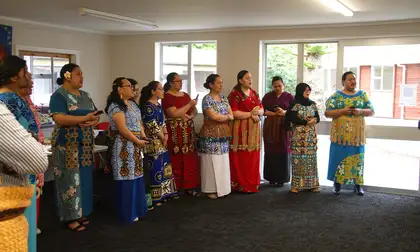

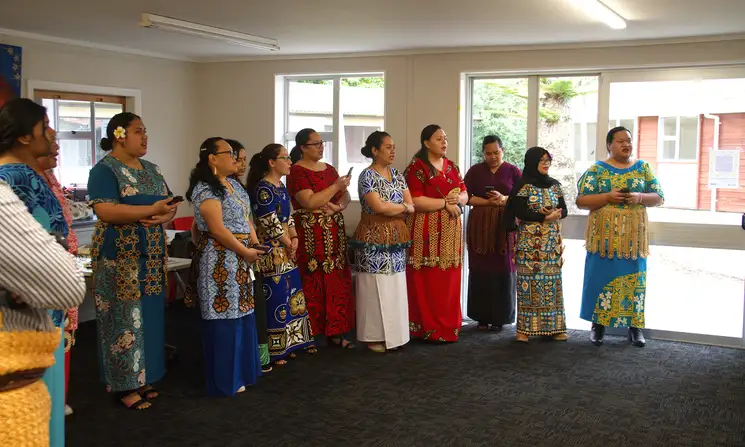
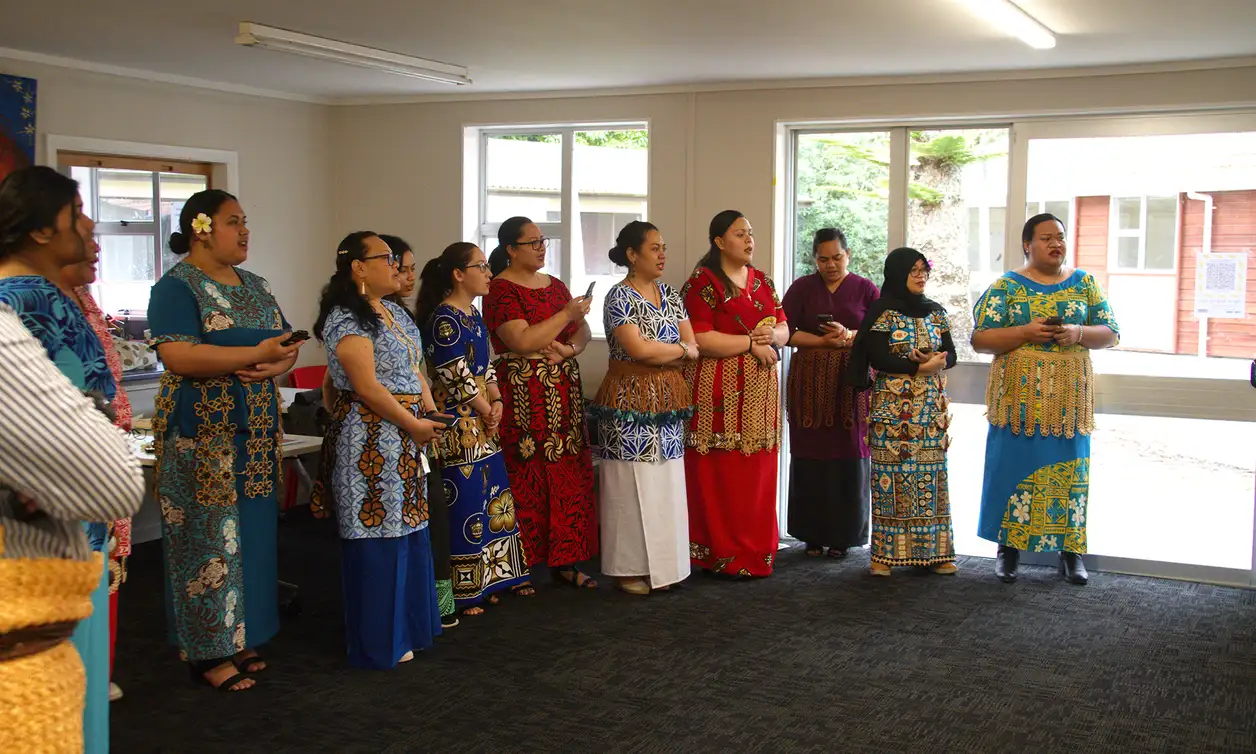
Planning to study at Massey for Pacific students
Learn how to apply and enrol, what support is available and meet the student recruitment advisors.


